Hardware Insights just acquired even more new instruments. First of all, I got the new UNI-T UTE1010A power meter. This is already a device we can actually call a measuring instrument, unlike the previous child toy wall wattmeters. It is specified for measuring up to 10 A and 300 V (although the latter figure is unrealistic for a normal mains supply). It consists of four displays: one for voltage, one for current, one for the actual power and the last one is combined for peak current, power factor and frequency. Plus it has some limiting functions. Each display can show four digits, that means we can now measure somewhat more accurate power factor with as much as four significant digits (with resolution of 0.001).
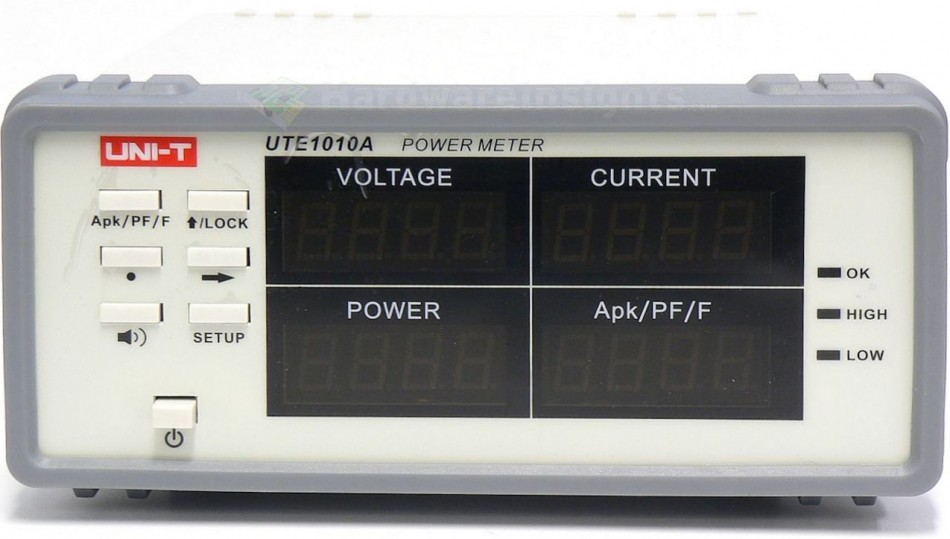
The best accuracy is 0.4 % of the reading + 0.1 % of the range (10.00 W, 100.0 W and 1000 W) + 1 digit. This is already better, but I also believe it has somewhat faster polling rate of the measurement, specification says 5 kHz bandwidth for frequency, I believe current and voltage are measured with the same frequency. Although it is still not entirely enough to measure harmonics, I believe it also has some kind of filter to somewhat limit at least some of the harmonics. This is very important to measure units with no power factor correction (or for situations when it is disabled – low loads, stand-by).
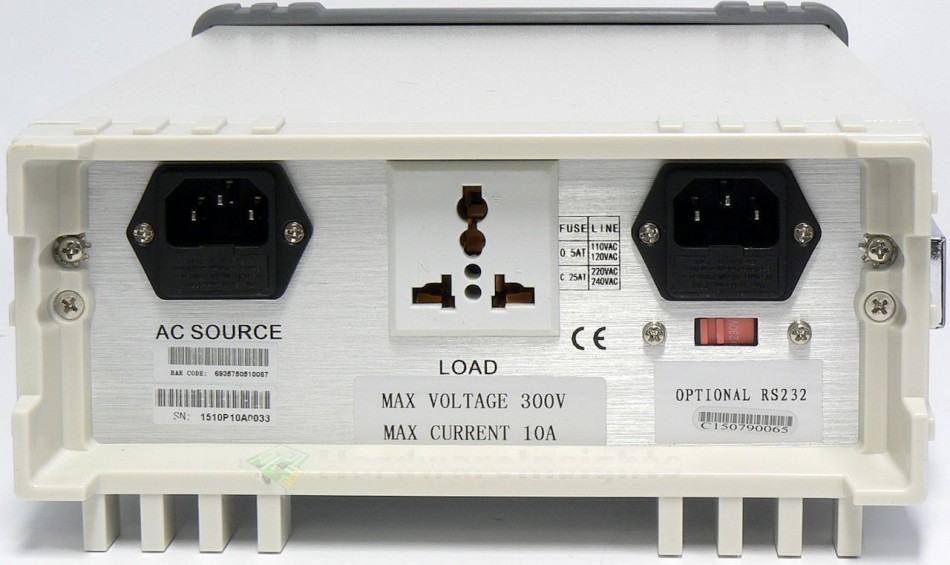
The image of the backside shows us the unit uses IEC C14 inlets for both its internal power supply and for the measured load’s input. We can see it is somewhat designed for all the world countries except those using CEE 7/3 and 7/5 sockets for the actual output power as it has this combined socket with no central ground pin, but central hole. I think that C13 would be more appropriate, but anyway, fortunately I have been able to collect all the different kinds of cables over the years so I found one which fits. I think it’s the American NEMA 5-15, which is intended for 125 V, but I think I can live with that, the insulation is thick enough :D
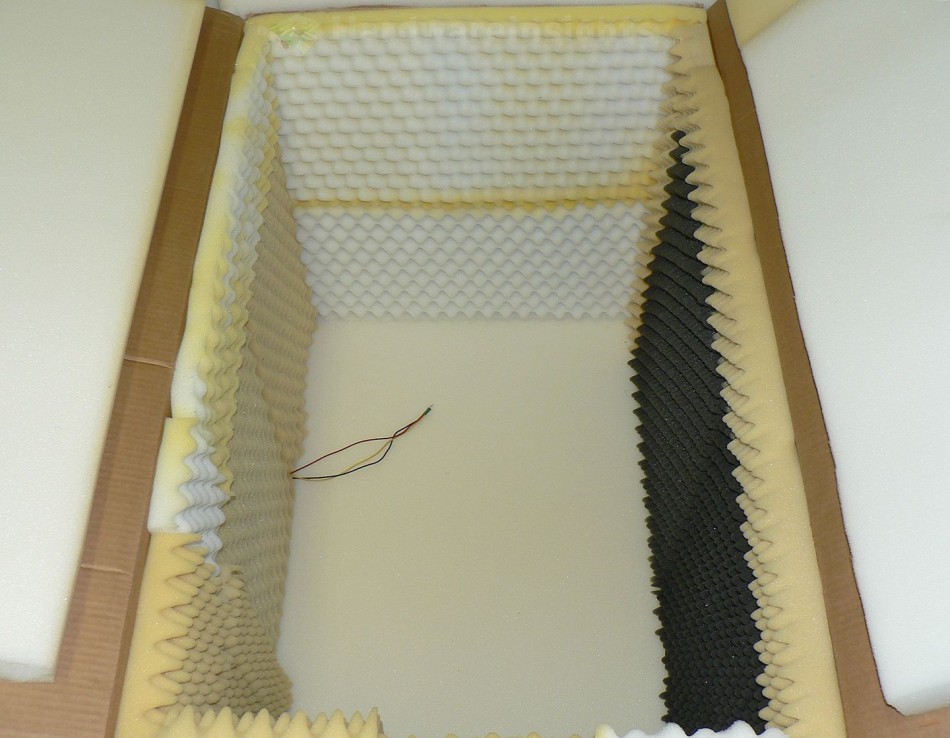
I have also finally finished the silent box I promised earlier, or, to be precise, anechoic chamber. It is based on an carton box from old 1990s Finlux CRT TV and should be able to somehow accommodate even most of the current PC cases! I used over 5 square metres of 3 cm thick PUR foam (under local name “molitan”). Internally, there are two layers on the bottom and single on the ceiling. Then close to two square metres of acoustic wavelet for the sides. I would have used more if I had any, this has already almost depleted my stock I have been acquiring for years ;-) On the outer surface, there is double layer on the ceiling (removable so I can enter the chamber) and single layer everywhere else, including the bottom.
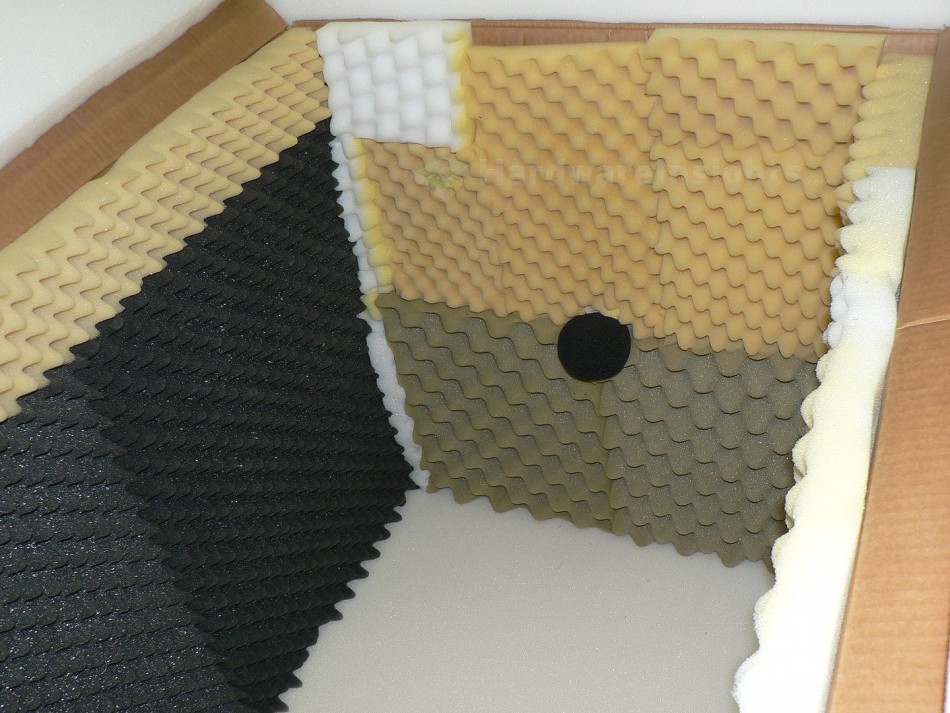
It is not ideal, but should do for some time. However, the sound meter is just cheap Chinese toy and the microphone exhibits quite high lower threshold. So even in absolutely silent rooms (as long as I can hear) during night, I never reached lower than slightly under 39 dBA. As it has lower threshold of 30 dBA, it seems the silent sounds are just shifted to show higher value. But it is sensitive to the smallest changes so I believe I will be able to measure something with that. We will just have to take the results not as absolute values of noise, but just as a tool for comparing different devices between each other.
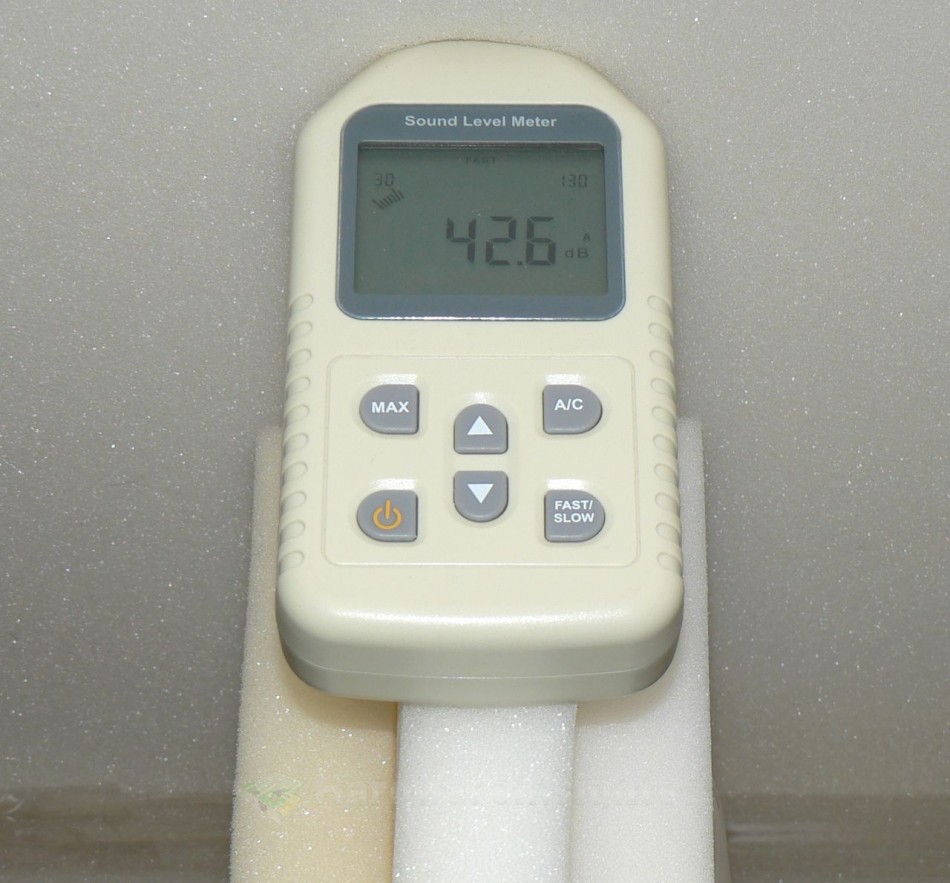
In other words, we will not pay that much attention to how much we actually measured, because clearly, there is nowhere near 39 dBA in a silent room of countryside house at 01:00 hours in the winter night. Rather than that, we will set up a table similar to the one we already have for comparing power supply value in each review. There we can see how each unit stands up against known standards of silent and noisy units (such as current Seasonic PSUs). Hopefully in time I will acquire better instruments. As always, you too can help HWI getting more new instruments, or better instruments.

